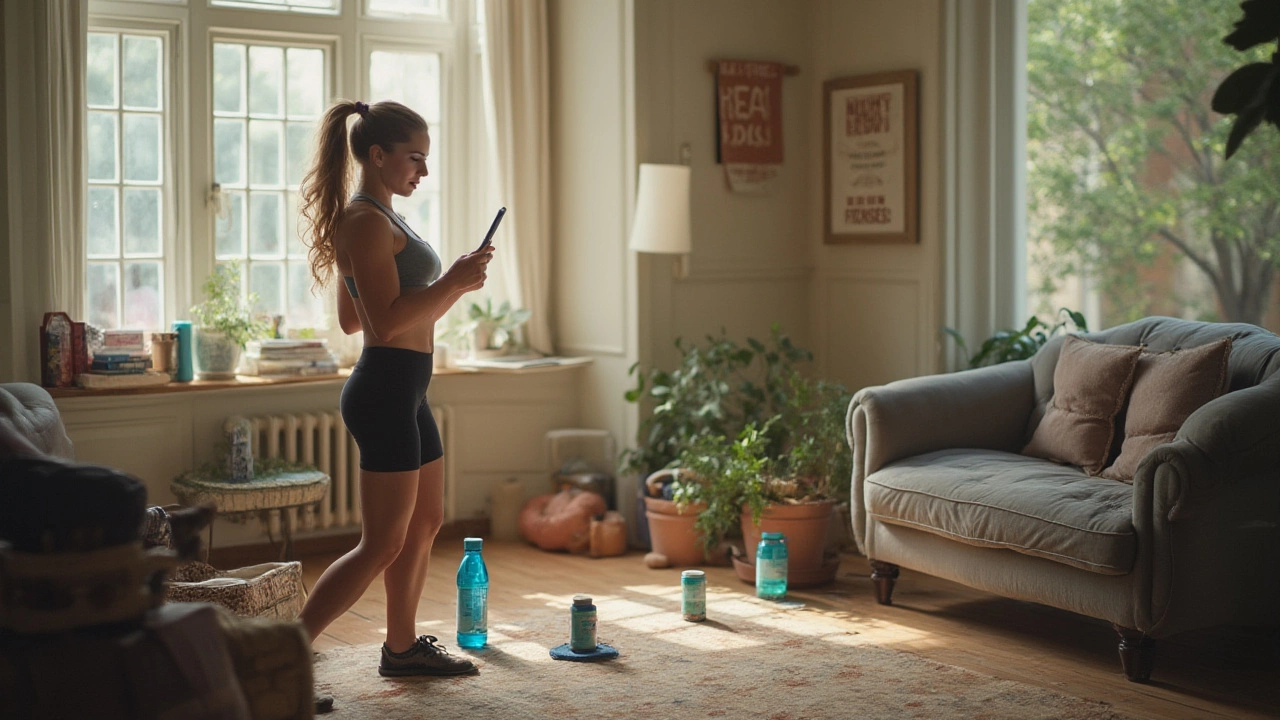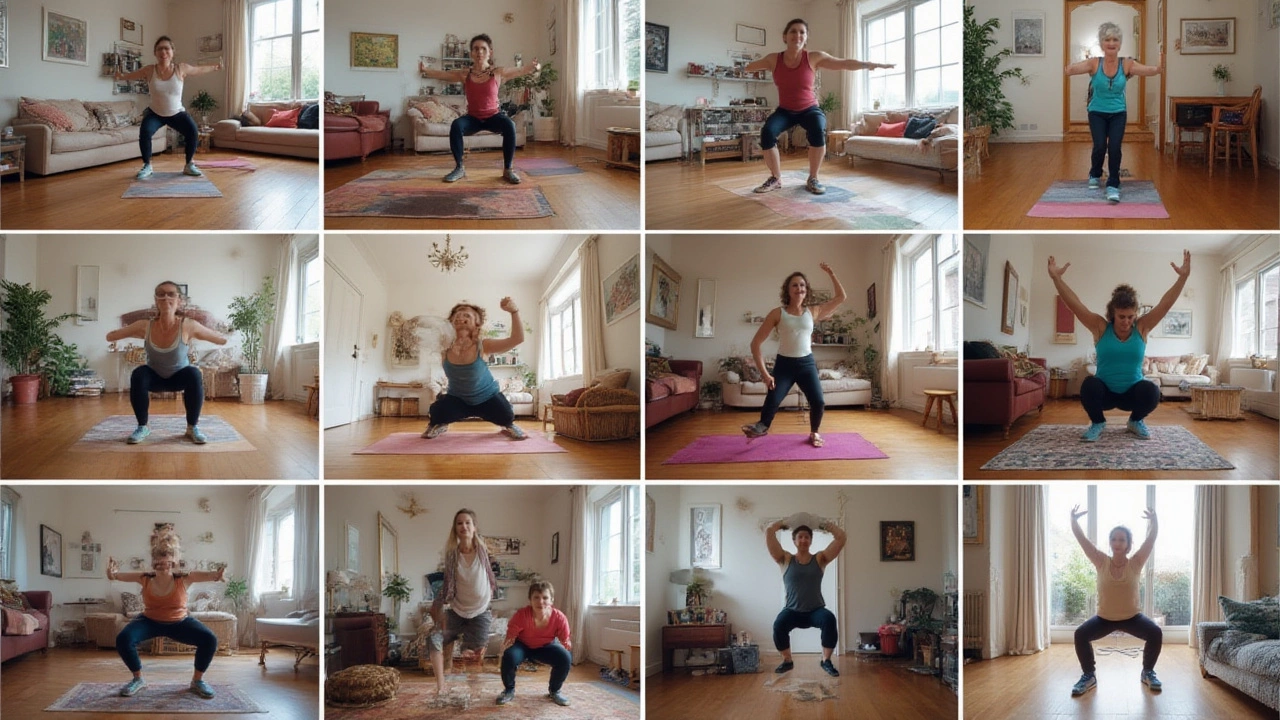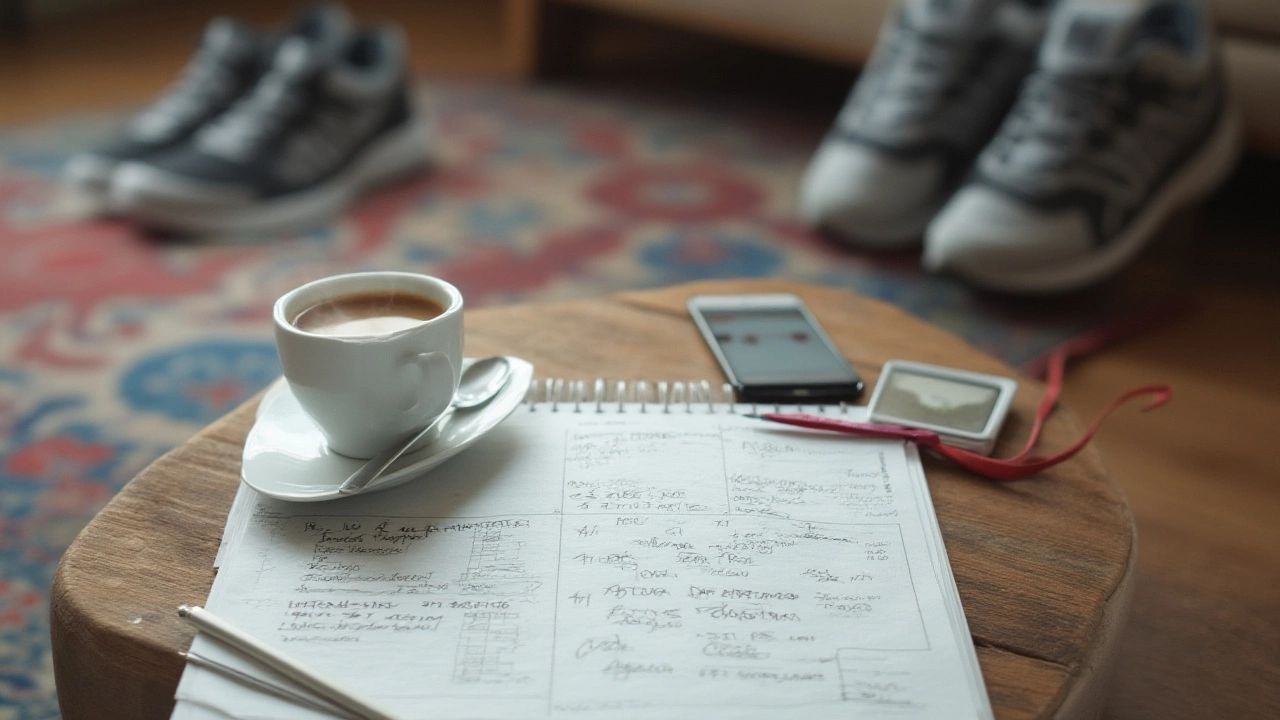
You know that meme: gym memberships purchased in January, regret settling in by March? It’s a real thing. People spend thousands every year on gym subscriptions, and yet nearly 67% admit—according to a 2024 survey by Statista—that they hardly use them. There’s something comical about a treadmill doing more work drying laundry than your feet. But what if you could skip the gym drama and still get the body changes you want? Is it really possible to get fit, strong, or even ripped without stepping outside your front door?
Right, let’s settle a common myth fast—getting fit at home isn’t “settling.” In fact, there’s a quiet revolution happening in spare bedrooms, tiny apartments, and living rooms everywhere. Back in 2020, nobody had a choice. Gyms shut down, resistance bands flew off Amazon shelves, and YouTube fitness gurus collected billions of views. Fast-forward to 2025, and millions have never looked back. Here’s a fun fact: a study from the American Council on Exercise in 2022 found that 71% of their respondents said they planned to keep working out at home—even after gym restrictions lifted.
How does a living room or a hallway compare to a fully-equipped gym, though? Honestly, you can do a wide range of exercises using just your bodyweight. Think about push-ups, planks, squats, lunges, and glute bridges. These ‘classic moves’ work because they engage multiple muscle groups at once, and their effectiveness depends on how you perform them, not where. According to a 2023 study published in the Journal of Strength and Conditioning Research, participants who did bodyweight HIIT circuits at home for twelve weeks saw comparable improvements in aerobic capacity and muscle tone as those hitting the gym for weight sessions.
And let’s not ignore the tech advantage. There are now dozens of free or cheap fitness apps, and some (like Nike Training Club or FitOn) include high-quality video routines, calendar reminders, and progress tracking. A bit of structure is all most people need to stay on track. Equipment-wise, bands, a mat, and maybe a kettlebell or two can cover nearly every major muscle. Some routines get downright creative—canned food for weights, steps for cardio, towels for sliders. It’s not about the fancy gear, it’s about sticking with a plan.
Surprisingly, people often see faster results at home than at the gym. Why? Two reasons: consistency and habit-building. Research shows that convenience is the number one predictor of exercise adherence. When you ditch the commute, the excuses dry up. Instead of packing a bag and driving somewhere, you can roll out of bed and get moving in your pajamas. That’s powerful.
| Activity | Calories Burned (30 min) | Equipment Needed |
|---|---|---|
| Bodyweight HIIT | 250-400 kcal | None |
| Yoga Flow | 120-180 kcal | Mat |
| Jump Rope | 350-450 kcal | Rope |
| Resistance Bands Circuit | 200-350 kcal | Bands |
If you’re thinking home workouts are somehow “less effective,” it’s time to challenge that. The workout you actually do is the best workout, period.

So what does it take to actually get results from home workouts? It’s not magic, but it does require a plan—because nobody gets fit by just watching a workout video with a cup of coffee in hand. Let’s talk about what really counts.
First up, consistency beats intensity for most people. It’s tempting to go all out with a 90-minute bootcamp after a motivational TikTok, but you’re more likely to build a real habit with bite-sized sessions. Five or six days a week of 25-40 minute workouts will serve you much better than hoping for one marathon workout session. According to Allison Brager, a neuroscientist and author quoted in CNN Fitness, "Building a baseline routine is more important than any extra bells and whistles in your workouts."
Next, you gotta mix things up. Your body gets used to a routine, and that’s when results stall. Keep things fresh with a combo of home workouts—try strength circuits (think squats, lunges, push-ups), followed by some plyometrics like jump squats, and end the week with yoga or a stretch session. Schedule these in a notebook or app. It sounds simple, but ticking off every session keeps you motivated.
Don’t be afraid to use whatever you’ve got lying around. Soup cans can double as light dumbbells. Stairs are perfect for cardio (how many celebrities have we watched sprinting up and down grand staircases on Instagram?) Got a kid or pet? Piggyback squats will build some serious glutes! The point: you don’t need a home gym. You need creativity and a willingness to look a little silly.
Boredom kills consistency, so find something you love. Can’t stand burpees? Skip them. Enjoy dancing? Load up a YouTube Zumba class and sweat while you smile. Fitness only works if you keep coming back. People who enjoy their routine stick with it up to four times longer than those who force themselves through dreaded exercises, a Stanford University study confirmed last year (2024).
Progress is more about the process than perfection. Track your reps, celebrate moving from your knees to full push-ups, or shaving five seconds off your plank. The data helps, too. Use your phone camera to film form checks or monitor progress. Plenty of fitness apps now let you log everything, and seeing those stats build over weeks is more motivating than any scale.
Finally, recovery matters—maybe even more at home because people skip it more often. Take a day to stretch, foam roll, or walk outside. Home workouts let you be flexible, so use that to your advantage, but don’t push till you burn out. If you do get bored or stuck, jump into a livestream class or invite a friend to join virtually. Social accountability works wonders for motivation—it’s half of why gyms are successful in the first place.
As the strength coach Bret Contreras put it,
“Progress doesn’t care where you work out—the only thing that matters is that you keep moving, challenge yourself, and never give up.”

So, if you stick to your home routine, what kind of results are actually possible? Real talk—yes, home workouts absolutely can deliver big changes, as long as you train smart and keep at it. The first thing most people notice from consistent movement at home isn’t six-pack abs, but better moods. That’s not just a warm, fuzzy claim: a meta-analysis from Harvard Medical School in late 2023 found that thirty minutes of moderate exercise, completed five days a week, decreased symptoms of anxiety and depression just as much at home as at the gym.
Physical changes take a little patience, but progress shows up if you let it. For beginners, strength and endurance gains appear as soon as 2-3 weeks in. A 2023 study published in Medicine & Science in Sports & Exercise compared two groups—one training at home, the other at a community gym—using nothing but resistance bands, bodyweight, and some household objects. Both groups saw similar rises in their push-up and squat numbers over 12 weeks.
If you play the long game, you’ll win. Most healthy adults see a 5-10% drop in body fat over three months with regular home training and a little attention to nutrition. Muscle definition appears next, especially if you challenge your body with harder variations—think single-leg squats or pike push-ups. You probably won’t end up like a bodybuilder without serious weights—yes, resistance is required for huge muscle size—but definition, tone, and strength? Definitely possible.
One unexpected perk: many people report sticking with home workouts longer than gym regimens. With zero commute, less equipment to clean, and the ability to train any time, people who previously struggled to make it to a gym found themselves building streaks of 50, 100, or even 200 straight days. Remember that “No zero days” philosophy making the rounds on Reddit? Turns out, it works.
But here’s the catch—not every workout you find online is safe or effective for you. Beginners, especially, need to focus on form and technique. Following endless influencer routines can backfire if you’re not careful. If you’re brand new, invest a few minutes in learning basics: proper form, breath control, and what to do if something hurts.
If you want to take it next-level, invest in a set of adjustable dumbbells or a set of resistance bands. For under $50, you unlock hundreds more exercise options and a simple way to add progressive overload (fancy fitness speak for making things harder over time, which is how the body adapts and changes). And yes, even bodyweight moves can be tweaked for ongoing challenge—try elevating your feet in a push-up, or slowing down eccentric (lowering) portions to burn more.
And about results—don’t just rely on photos or the bathroom scale. Track how you feel: more energy? Sleeping better? Less back pain? Feeling stronger carrying groceries or playing with kids? Those “hidden” results matter just as much.
Still suspicious? Olympic gymnast Simone Biles famously trained without a formal gym for several months during the Tokyo lockdown, focusing on plyometrics, stretching, and core moves at home. Her secret? “No equipment, no problem. As long as you’re willing to work for it.” That’s not just superstar motivation—it’s a working blueprint for regular people, too.
So, can you get in shape with home workouts? Yes—if you show up, sweat a little, and make it a part of your everyday life. Your living room could easily become your own secret gym, no overpriced membership required. And hey, you don’t even have to wear shoes if you don’t want to!